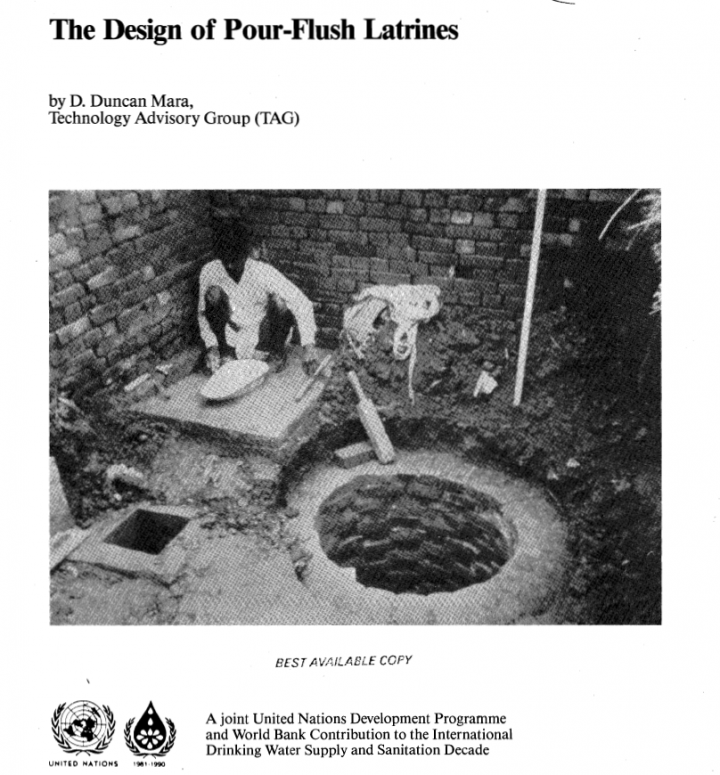Still have questions?
You could not find the information you were looking for? Please contact our helpdesk team of experts for direct and individual support.

Author: Mara
Year: 1985
Publisher: UNDP, World Bank
The traditional solution to providing sanitation facilities in urban areas has been conventional sewerage, but this technology is so expensive that it is not generally affordable by low-income communities. World Bank research has shown that full health benefits can be obtained through the use of a variety of lower-cost alternative sanitation technologies. Although the user convenience level of these technologies is not necessarily as high as that of conventional sewerage, this should not be considered a major disadvantage, since health improvements are initially more important than providing high levels of user convenience. This Technical Note describes in detail one of these technologies, the pour-flush latrine, which has been widely adopted during the International Drinking Water Supply and Sanitation Decade (1981-1990).
"*" indicates required fields
You could not find the information you were looking for? Please contact our helpdesk team of experts for direct and individual support.


This website uses cookies so that we can provide you with the best user experience possible. Cookie information is stored in your browser and performs functions such as recognising you when you return to our website and helping our team to understand which sections of the website you find most interesting and useful.
Strictly Necessary Cookie should be enabled at all times so that we can save your preferences for cookie settings.
If you disable this cookie, we will not be able to save your preferences. This means that every time you visit this website you will need to enable or disable cookies again.
This website uses Google Tag Manager to collect anonymous information such as the number of visitors to the site, and the most popular pages.
Keeping this cookie enabled helps us to improve our website.
Please enable Strictly Necessary Cookies first so that we can save your preferences!
More information about our Cookie Policy
